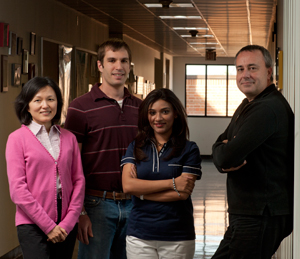At Rice University, an innovative and simple method has been developed, which is a scientific breakthrough, that can improve the effectiveness of a common antiviral agent.

The team of researchers from Rice University published an article in the scientific journal Environmental Science and Technology It describes that adding silicon to titanium dioxide - a common chemical used to kill harmful organisms - significantly increases its ability to break down viruses found in water and spray.
"We took a nanoparticle that has been used for many years and with the help of a very simple treatment we were able to improve its activity threefold, without any real additional cost," said the lead researcher. The researcher goes on to explain that the substance, titanium dioxide, is used to kill viruses and bacteria as well as break down organic substances through a process known as photocatalysis (exposure to light, usually ultraviolet radiation). The substance, which exists in nature, is also used as a coloring agent in commercial paints and even in food as well as an ingredient in sun protection cream.
The researcher explains: "You simply take the titanium dioxide and mix it for several minutes with silicone grease, or silica, or silicon acid, thereby increasing its effectiveness as a catalyst."
The researchers used a "pinch" of silicon dioxide to treat a commercial form of titanium dioxide, known as P25. "Actually, we took a white dye and reacted it with sand," explains the researcher.
Disinfecting a specified amount of water, a process that used to last about an hour, took us a few minutes thanks to the increased catalytic ability of the material, explains the researcher. "We chose the Yangtze River (a river in China which is the longest river in Asia) as a benchmark for our tests, since it is recognized as the most polluted river in the world today and contains the highest virus content," the researcher notes. "Even with such a high level of viral contamination, we were able to get complete eradication of the viruses found in the water." "Our process is simple, cheap and environmentally friendly," adds the researcher.
The research team began trying to adapt the titanium dioxide about two years ago. One of the researchers involved in the findings, a professor of civil and environmental engineering specializing in water and wastewater treatment, asked the research team for assistance in finding new photocatalytic nanomaterials for drinking water disinfection.
The discovery came randomly and completely unintentionally - one of the students used silicone grease to seal the vessel in which she heated the commercial substance P25. Surprisingly, the catalytic ability of the material that was in this vessel improved miraculously. Follow-up experiments with non-silicone type grease revealed that the properties of the commercial material do not change, regardless of heating the sample. Later, the researchers were able to obtain the balance point in the ratio between the two materials, after many combinations of them, where the product's efficiency is the highest. The researcher explains that this exact combination causes a change at the molecular level of the substance, and improves the activity of a known catalyst in a simple and cheap way.

2 תגובות
It is not clear that grease does not dissolve in water
What is the pollution created by the "environmentally friendly" process? (titanium, silicon?)